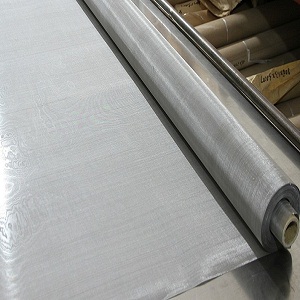
Tungsten mesh as the best material for thermal barrier
Factors noticed for motor case welds to redesign the Space Shuttle solid rocket motor. The design allows chamber pressure to approach the basic seal. Gas stagnation precluded seal and case damage in the main case. Conservative flow and heat evaluation however described that gas redistribution could cause unwanted heating. So a heat resistance barrier tungsten wire mesh was created to reduce the flow and heating in the internal parts.
However different materials were tested, their cross-barrier pressure differentials were evaluated to set the lower limits on the permeability of the material. The cold flow material permeability evaluations were conducted. The hot flow, Mach blow tube analyses were performed to determine the erosion resistance. The tungsten mesh offered the excellent service.
The main design was improved to make the use of barrier. The designs were analyzed in subscale motors that were similar to redistributing flow environments. The after-fire inspections and in-test instrumentation described that the barrier prevented the slag and offered better service by decreasing the gas temperatures and velocities in the weld.
The fact of a thermal barrier in the solid rocket motor joint was tested as a development project for the rocket motor. The basic joint design factors recognized for the Space Shuttle are:
- An unvented prototype where the internal insulation prevents the contact of hot propellant gases from the seals.
- A vented prototype where the propellant gas quickly travels from the gaps in the internal insulation for seal pressurizing while igniting the motor.
Vent Design
With insulation, the case is thermally secured and offered an indirect way to prevent radiation. The distance between the joint insulation leads the propellant combustion gas to the seal while igniting the motor. The convective heating is prevented under ideal environments as the gas releases enthalpy and stagnates in the internal weld region. The gas redistribution may be resulted, although it results into controlled functionality of submerged nozzle vectoring and asymmetric grain slump. The received heating may be unnecessary. Conventional evaluation of the Space Shuttle submerged nozzle cavity with a vectored nozzle described circumferentially streaming gas and internal joint heating. This heating was described to affect the elastomeric primary seal, an improper condition.
Development of thermal obstructer
A thermal obstructer was found as an inclusion to the vent joint design to resolve the internal joint heating issue. The mesh obstructer had to limit the internal joint heating by decreasing gas velocity and temperature. The tungsten mesh is adequately porous to permit ignition transient by flow and basic O-ring pressurization. Good erosion resistance was needed to deal with severe shuttle internal media.
The different materials such as metals, carbon organics an ceramics were tested in a large range of forms such as mesh, coatings, foils, fibers etc. The specimens of reliable materials were found significant. The porous flow testing was conducted to find if the materials permit quick through-flow during the ignition pressure transient. The tungsten wire mesh offered the excellent service providing good erosion resistance and durability for internal regions of the shuttle.
